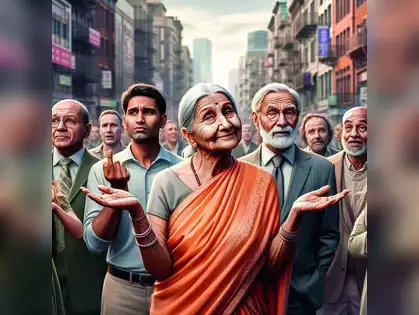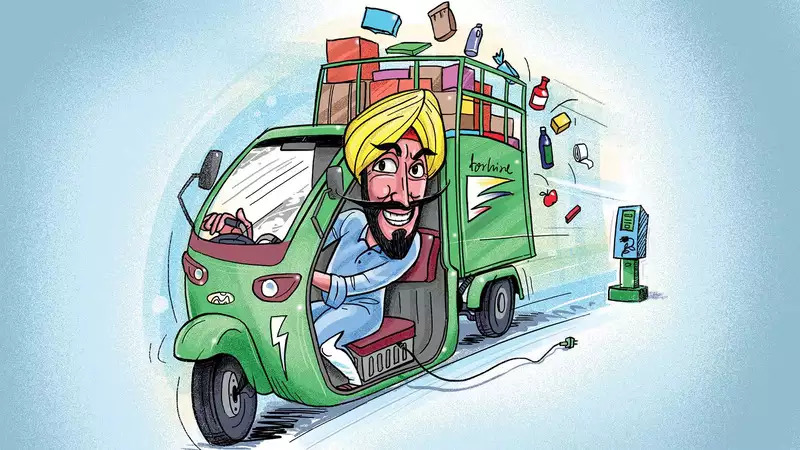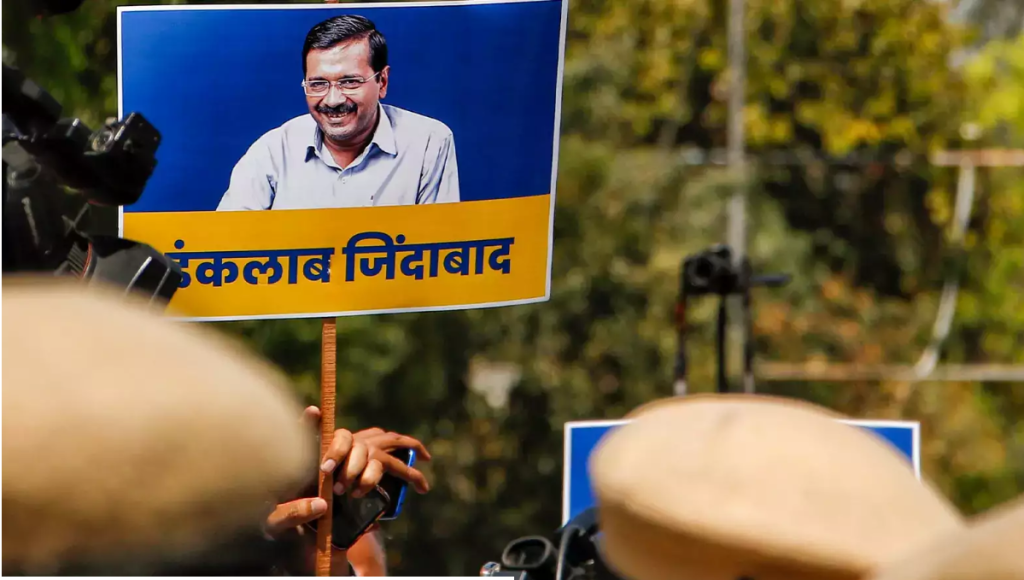Congress sabotage of panchayati raj may have been a reason for voter disillusionment with the party, says Swaminathan S Aiyar.
Centralised rule in India has so obviously failed that most observers of the Indian scene, myself included, have long argued in favour of empowering panchayati raj institutions. We also feel it will yield political dividends. This thesis was tested in the recent Kamataka Assembly election. Mr Ramakrishna Hegde had revitalised panchayati raj in the state in 1987, but the experiment was aborted by the Congress regime that followed. Did this help the Janata Dal win the recent election?
The answer hinges on how effective panchayati raj was in practice. While decentralised government has many enthusiasts, others warn against exaggerated expectations. Dr B R Ambedkar denounced villages as cesspools of ignorance and superstition that would harass the lower social classes if empowered. He felt it was essential to shift decision-making to higher levels where an enlightened elite free from traditional prejudices would overcome local parochial interests that wanted to perpetuate the rural power structure.
It is ironical that the most successful panchayati raj experiment has been conducted in West Bengal by Marxists who, in other countries, have been great centralisers. Mr Jyoti Basu has won four successive assembly elections with majorities of two-thirds and more, an excellent \’advertisement for panchayati raj. Mr Ramakrishna Hegde sought to follow suit but got walloped in the 1989 state elections, showing that even if panchayati raj works, it is not an infallible passport to power.
An interesting new study of democratic decentralisation has recently .been done by James Manor and Richard Crook for the Overseas Development | Administration, UK. The study looked at experiments in decentralisation in Karnataka in India (1987-92), Bangladesh (during the Ershad regime). Ivory Coast and Ghana.
Of the four, Karnataka was by far the biggest success. Karnataka gave its mandal and district councils enough finance, whereas the experiments in Ivory Coast and Ghana collapsed because of fiscal stringency. In Bangladesh and the African countries, the absence of democratic traditions meant villagers were afraid to demand their rights or complain against bureaucrats. The existence of democratic traditions and a free press in Karnataka meant that decentralisation worked much better.
Villagers in all four places were asked by the researchers to what extent the decentralised set-up had satisfied their needs. In Karnataka, 69 per cent of villagers were satisfied with the zilla parishad and 66 per cent with the mandal panchayat. By contrast, the satisfaction level was only 36 per cent in Bangladesh, 36 per cent in Ivory Coast and 18 per cent in Ghana.
The positive features in Karnataka were:
- Decentralisation provided avenues for villagers and villager associations to press for changes and interact with bureaucrats and councillors. As a result both local participation and the administration\’s response improved.
- Decentralisation led to a modest but significant fall in absenteeism of public employees, and increased their output. So the actual delivery of services to the public increased at no cost to the exchequer.
- Transparency increased. Villagers could see more clearly what was being done by whom and why.
- The number of micro-level development projects increased dramatically. There was great local enthusiasm for these village-level projects, which had earlier been neglected by the traditional administration.
- The diversion of funds through corruption decreased, though villagers thought it had increased. Earlier, the big boys in state capitals siphoned off large sums in ways not visible to villagers. After decentralisation, there was a lot of small-scale corruption at the local level which was visible to villagers. But, according to the study, the volume of kickbacks actually declined, a very positive result.
- Decentralisation produced a dramatically improved early warning system against disasters like drought and epidemics, enabling remedial action to be taken quickly. Now for the bad news. Decentralisation also had disappointing or perverse features, and the study therefore warns against expecting too much from panchayati raj. Some examples:
- Although reservation gave 20 per cent of local council seats to Harijans and 25 per cent to women, this was not effective. In practice, males from the upper castes dominated discussions and decision-making. This could change in due course, but Dr Ambedkar was certainly right in his reservations about rural democracy.
- Panchayati raj was not effective in alleviating poverty among Harijans and tribals. The rules for spending rural development funds earmarked 18 per cent of rural spending for Harijans, but the panchayats systematically ignored these rules with impunity.
- Panchayati raj was not effective for decentralised planning. Neither panches(councillors) nor bureaucrats had the inclination or expertise to plan new projects spread across watersheds and talukas — their pressure was for micro-projects at the village level, not district planning. The micro projects were mainly of interest to the dominant castes.
- Mandal panchayats were supposed to hold mass meetings in every village twice a year. In fact, councillors found popular criticism at these meetings unbearable, and abandoned holding them.
On balance, the study declares that the Karnataka experiment was a success. Others might think that the experiment\’s inability to do much for Harijans signified failure, but democracy Is not entirely about Harijans or the poorest of the poor — the vast majority of voters do not belong to either category. In Karnataka, the apparent success of panchayati raj did not prevent Mr Ramakrishna Hegde from being voted out in 1989. The next Congress regime headed by Mr Bangarappa ended the experiment despite Rajiv Gandhi\’s oft-proclaimed commitment to panchayati raj. This underlines a point made by the study — that politicians at higher levels will be jealous of panchayati raj and will do their damnedest to sabotage local government. The Constitution has now been amended to make panchayati raj statutory, but recently Mr Moily postponed Mahdal and zilla Parishad elections on the flimsiest ground. Panchayat elections have also been held up in other states. So not even Constitutional protection will not necessarily provide protection from political saboteurs.
The silver lining is that Congress sabotage of panchayati raj may have been one reason for the voters\’ disillusionment with the Congress party and its willingness to bring back the once-discredited Janata Dal. The study of Manor and Crook suggests that villagers would have wanted a return to panchayati raj, something best be ensured by voting for the Janata Dal. I doubt if this factor could have affected the vote by more a couple of percentage points. But since the Janata Dal won 30.6 per cent of the popular vote against the Congress\’ 30.0 per cent, this difference could have been critical. Scholars need to research this subject more deeply. They may come up with lessons for all parties and the nation as a whole.




